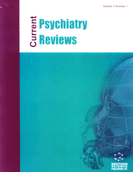Abstract
Childhood-onset schizophrenia (COS; defined as onset by age 12) is rare, difficult to diagnose, and represents a severe and chronic phenotype of the adult illness. A study of childhood onset psychoses has been ongoing at the NIMH since 1990, where children with childhood onset schizophrenia (COS) and severe atypical psychoses (provisionally labeled “multidimensionally impaired” or MDI by the NIMH team) are studied. Familial risk factors, genetic analyses, neurocognitive functioning, and brain imaging data are obtained every two years on probands and all first degree relatives. Multiple analysis from the NIMH study have found that COS subjects have more severe premorbid neurodevelopmental abnormalities, a higher rate of genetic anomalies, and a robust cortical gray matter (GM) loss during adolescence, which proceeds in a ‘back to front wave like fashion’ and appears to be an exaggeration of the normal cortical gray matter developmental pattern. These cortical GM changes in COS are diagnostically specific and seemingly unrelated to the effects of medications, as they are not shared by medication matched MDI patients, or psychosis not otherwise specified (NOS) patients who have converted to bipolar I at follow up.
Keywords: Childhood, schizophrenia, neurobiology, neuroimaging, treatment, genetics
 4
4



